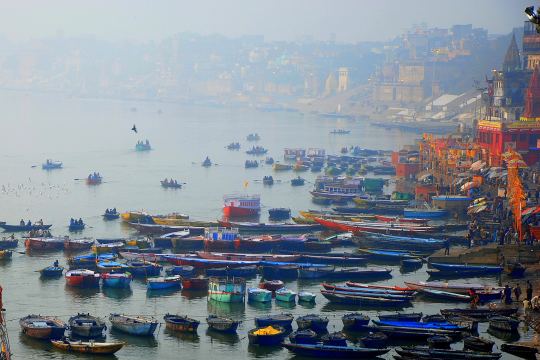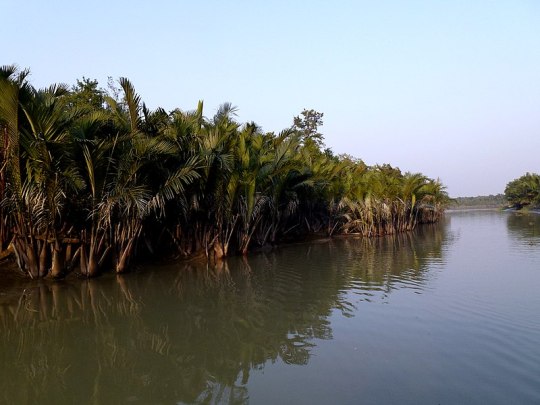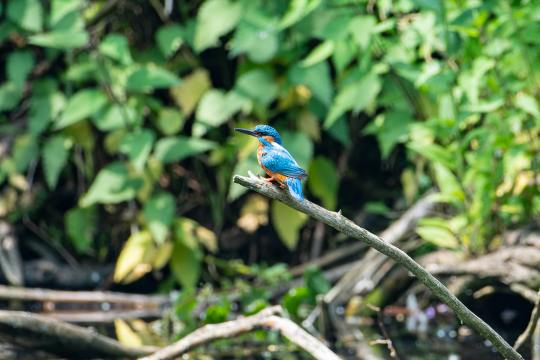Text
#sundarban#nature#travel#tourism#sundarbantour#sundarban safari#sundarbanbirdwatching#birdwatching#wildlife
0 notes
Text
issuu
#nature#tourism#travel#travelling#kolkata#kolkataartandculture#artandculture#cultureandtradition#cityofjoy
0 notes
Text
#sundarban#sundarban safari#nature#tourism#sundarbantour#wildlife#aviandelights#birdsinsundarban#sundarbanbirdwatching
0 notes
Text
#travel#adventure#adventuroustrip#sundarban#sundarban safari#sundarbantour#nature#tourism#travelling#wildlife#sundarban tiger reserve#sundarban national park
0 notes
Text
issuu
0 notes
Text
#travel#tourism#travelling#indiatourism#culturalandheritageplace#sundarbanhouseboat#tajmahal#redfort#indiagate#victoriamemorial#hawamahal#sundarban#mysorepalace#nature#historical landmarks#historical landmarks in india
0 notes
Text
https://sundarbanhouseboat.co.in/unveiling-the-mysteries-of-sundarban-wildlife-rivers-and-serenity/
Sundarban Houseboat help you experience the best of Sundarban where nature’s wonders and tranquillity lie together. Read to know about the unseen places in Sundarban.

#tourism#travel#nature#sundarban safari#sundarban#sundarbantour#sundarban national park#sundarbanhouseboat#sundarbantourism#sundarbantouroperators#sundarbantourbooking
0 notes
Text
Taste The Best Local Foods of West Bengal on Your Sundarban Tour
Food has a direct connection to the heart. Whether you accep it or not, your heart asks for some good foods after a hectic day. But when it comes to Bengali food, even the simplest Posto Bora tastes heavenly. As the temperature in West Bengal increases, the soul will find its way to escape the hot and humid weather.

So, why not splurge on luxury Sundarban tour and spend few days amidst natural and peaceful weather? And the cherry on top will be mouth watering authentic local dishes.
Now that we have already brought water to your mouth, let us share some authentic must try local foods in Sundarban.
Sundarban Bliss: Luxury Stay and Bengali Delights
The Sundarban ecotourism has evolved tremendously over the years. Throughout the years, people travel to sundarban to explore the flora and fauna of the world’s largest Mangrove forest. However, what most people forget that the place is also the origin of many authentic foods.
The tourism has increased exponentially over the years in Sundarban. Now the place is not just a tourist place but relaxing staycation as well. That is why, if you are looking forward to stay in some luxury resorts in Sundarbans and try the Bengali delights, you can do that.
Here we have gathered information on the most authentic Bengali dishes in Sundarban. So, check them out and make memories of your stay in Sundarban.
Aam pora shorbot
The weather and mango season make it impossible to visit and not drink Aam pora shorbot in Sundarban. The drink is made up of burnt raw mangos and sugar. When you return to the resort after a long day, you will need this drink for an instant relief. The charred skin adds smokey flavor to the drink. It leaves a relaxing and refreshing taste to your throat after a hectic day. If you are willing to spend on a luxury stay at Sundarbans, the Aam Pora Shorbot will be your welcome drink for sure.
Lau pata chingri
The foods of Sundarban are a mixture of exotic flavors and cooking style. You must have tasted prawns in various style. But, during your stay in Sundarban, you must try the famous Lau Pata Chingri. The dish is cooked in marinated prawns, wrapped in Lau pata and steamed indirectly. Try it with freshly cooked hot rice to get the best taste.
Mochar ghonto
Another famous Bengali cuisine that you must try during your staycation at the luxury resort in Sundarban is Mochar Ghonto. The dish is made up of the banana flower, diced potatoes, and crushed coconuts. The only spices in the entire dish is some cumin and bay leaves along with turmeric powder and salt as per taste. After a hectic outdoor activity, you will crave for some simple food. Along with the freshly caught fish dishes, mochar ghonto and rice will activate your taste buds.
Sorshe ilish
How can you not try Hilsa in Sundarban, that too during the peak season? Furthermore, if you are travelling during the Sundarban Hilsa festival, you will get to try a lot of Hilsa dishes cooked in different styles.

Most resorts in Sundarban arranges an in-house Hilsa food festivals. So, during your stay, dont forget to try the freshly caught sorshe ilish.
Sundarban ecotourism is highly dependable upon the tourism industry. However, starting with just tourism, the food industry has also evolved. Even though the food is similar but the cooking style make them taste differently. Therefore, make sure to try the kosha mangsho, Patisapta, Narus, Posto bora, Pithas, Noksha bori, and different types of sweets in Sundarban.
#sundarban#nature#travel#tourism#wildlife#sundarban safari#sundarbantour#sundarbanluxurytour#sundarbanluxurytrip#sundarbanecotourism#sundarbanhilsafestival
0 notes
Text
#tourism#travel#travelling#nature#sundarban#sundarban national park#sundarban safari#sundarban tiger reserve#sundarbantour#wildlife
0 notes
Text
#sundarban#sundarban national park#sundarban safari#travel#sundarban tiger reserve#wildlife#tourism#travelling#nature#sundarbantour
0 notes
Text
#tourism#travel#travelling#nature#wildlife#sundarban#sundarbantour#sundarban safari#sundarban national park#sundarban tour package#sundarban trip#sundarban tour operator#sundarban tour and travels
0 notes
Text
#tourism#travel#travelling#nature#wildlife#sundarban safari#sundarban tiger reserve#sundarban national park#sundarban#sundarbantour#sundarbantourpackage#sundarbantourism
0 notes
Text
#tourism#travel#travelling#kolkata#heritagewalk#heritagekolkata#walkinthecity#kolkatatourism#traveltokolkata
0 notes
Text
0 notes
Text
0 notes
Text
5 Ghats To Experience The True Essence of Banaras
There is no place like Banaras to experience eternal peace. The temples, people, shops, and most importantly the ghats are famous all over the world for their rich culture and tradition. The sacred city, Banaras is located on the banks of the river Ganga in the northern state of Uttar Pradesh, India. All of the ghats hold immense religious and cultural significance for Hindus and are an integral part of the city's identity.

However, picking 5 ghats in Banaras will be helpful in guiding you through the streets of Benaras.
Dashashwamedh Ghat
The oldest and most important ghat in Baranas is Dashashwamedh Ghat. Famous for the Ganga arti, the ghat is widely popular among tourists from all over the world. Every evening, people gather around the ghat to experience the blowing of conch shells, brass cymbals clanging, bells ringing, and veneration of the Ganga by the priest along with chanting mantras. The brass lamps are several tiers high, which create a magnetic illusion by the Ganga is very attractive. Ritualistic worship by the river will bring out the true essence of Banaras.
Assi Ghat
Situated at the confluence of the Ganges and Assi rivers, Assi Ghat holds great religious significance. Visitors visit Assi ghat to seek blessings from the lingam of Lord Shiva, present beneath a peepal tree. During the worship of the lingam, priests chant mantras, and blow conches; spreading a spiritual flavour in the air. The Assi ghat is also famous for boat rides, early morning yoga sessions in Banaras, or just simply enjoying the morning breeze by listening to spiritual songs.

Manikarnika Ghat
Visiting the Manikarnika ghat in Benras will take give you a tour of Indian mythology. And if a cremation ghat can be a travelling site, it has to be the Manikarnika ghat. Near the Manikarnika ghat, a pond is present which says that Lord Vishnu dug it. So, Lord Shiva and Goddess Shakti can bathe. A footprint near the pond signifies the foot of Lord Vishnu, where he meditated. As one follows the steps, one can see the famous Manikarnika well. The locals say that Goddess Parvati dropped her earring in the well and Lord Shiva dug a hole to find it. The depression is filled with water from the sweating of Lord Shiva.
Harishchandra Ghat
Located next to Manikarnika Ghat, Harishchandra Ghat is another significant cremation ground in Baranas. It is named after King Harishchandra, known for his unwavering truthfulness. It is believed that he worked as a cremator at this ghat as a result of a curse and eventually attained salvation. Based on this belief, people from different areas travel for hours to have their beloved cremated here. According to the atheist, cremating the dead in this ghat will get the dead person salvation like King Harishchandra.
Panchganga Ghat
Leaving Banaras without visiting the cleanest ghat in Banaras will be a crime. The Panchganga ghat is located at the confluence of 5 rivers; Ganga, Dhupapapa, Kirana, Yamuna, and Saraswati. Even though only one of the 5 rivers; Ganga remained on earth, there are five black stone idols that represent the five river goddesses. It is believed that bathing in the waters of this ghat can wash away sins and purify the soul.
Banaras has ghats more than any city can have. And all of the ghats carry the unique taste and essence of Vedas and Indian Mythology. Each ghat has its own unique history, mythology, and cultural significance, making Baranas a truly fascinating and spiritually vibrant destination. So, visiting the ghats in Banaras will be a one-time experience for any traveller.
0 notes
Text
Sundarban National Park: A World Network of Biosphere Reserve
The natural biosphere reserve, the Sundarban Delta, has significance in various ways. Sundarban has an important environmental role to play, whether it is the World's Network of Biosphere Reserves, the home of the famous Royal Bengal Tiger, or the world's biggest mangrove forest.

The abode to a huge variety of saltwater plants and trees, the Sundarban vegetation is a sight to see. The wet and damp canal banks, the salty air, and the natural air conditioning system make it memorable in a different way. The morning starts with vibrant, colorful birds flying over and singing melodious songs. The boats sail through the middle of the canals while the Gangetic crocodiles sunbathe on the muddy banks. Or a hungry crocodile is sailing close to the boat, toward its prey on the side. Everything about Sundarban is so raw and pure that it became a tourist attraction from all over the world. But what is the origin story of Sundarban?
Origin of Sundarban
“Where is Sundarban National Park located?”
It is the most sought question, and the query is not restricted to India. People from all over the world look for this reserve forest. So, it has some value-added significance in the environment.
Sundarban National Park is located at the confluence of India and Bangladesh. The Gulf of Bengal borders the Sundarbans to the south. Sundarban has evolved throughout the years of natural deposition from the rivers. Coming from a higher altitude, the upstream sedimentation gets deposited in the plains. Those sedimentations are accompanied by intertidal segregation, along with changes due to urban construction, etc. In short, the origin of Sundarban is due to the deposition of sediments carried by the rivers to the sea. At the meeting point, the coastal tides hit the river flow. As a result, the sediments lose their speed and cannot move anywhere.
Similar to the mechanism, there are various rivers all over the world that meet the sea. But no island has significance like the Sundarban. And the reasons are justified.
Importance of Sundarban National Park
The Ganges Delta and Sundarban have complex ecosystems that no forest has. This one has three tracts of mangrove forest with a huge collection of flora and fauna. Some of the plants are rare and tagged as endangered as well. The entire forest belonged to India. But, with the split, Bangladesh received a large portion of it. According to the debate, the term "Sundarban" is derived from Sundari (Heritiera fomes), a mangrove tree species that grows across the area. Some people also say that the name came from Sundar Ban, which means Beautiful Forest.
Aside from Sundari, halophytic plants such as gewa, goran, and keora are common in the Sundarban. The mangrove forest is also the home of various animals, and some of them are endangered as well. Among those endangered animals is the Royal Bengal Tiger, which is rare but abundant in Sundarban. But, there are several animals such as spotted deer, wild boars, Gangetic dolphins, otters, wild cats, crocodiles, and monkeys that are also available here. However, some species, such as the guar, one-horned rhinoceros, water buffalo, and several birds, are not seen anymore. Forest officials consider them extinct now.

The data shows that nearly 250 bird species, including migratory birds, have been spotted in Sundarban. In Subndarban alone, five types of kingfishers can be seen. Apart from that, white ibises, raptors, waders, hornbills, and storks are abundant here. A huge number of amphibians and reptiles. The marine Olive Ridley turtles are well-known among them. During the breeding season, the beach becomes full of turtle eggs and new hatchlings.
The Sundarban, with its unique fauna and flora, is critical to maintaining ecological equilibrium. Also, the mangrove forest protects the land from natural calamities. So, it is necessary to maintain the mangrove forest. Based upon that, tourists from all over the globe come to Sundarban. Its entire economy of it is dependent upon tourism. Locals take the tourists on boats for the Sundarban safari. For the same reason, in 1875, a large portion of the forest was designated as a "reserved forest" under the Forest Act of 1865. The dense forest was classified as the main area of the Sundarban Tiger Reserve in 1973 and as a sanctuary in 1977. In 1984, it was described as a national park.
#travel#sundarban#sundarban national park#tourism#nature#travelling#wildlife#royal bengal tiger#sundarban tiger reserve#sundarban safari
0 notes